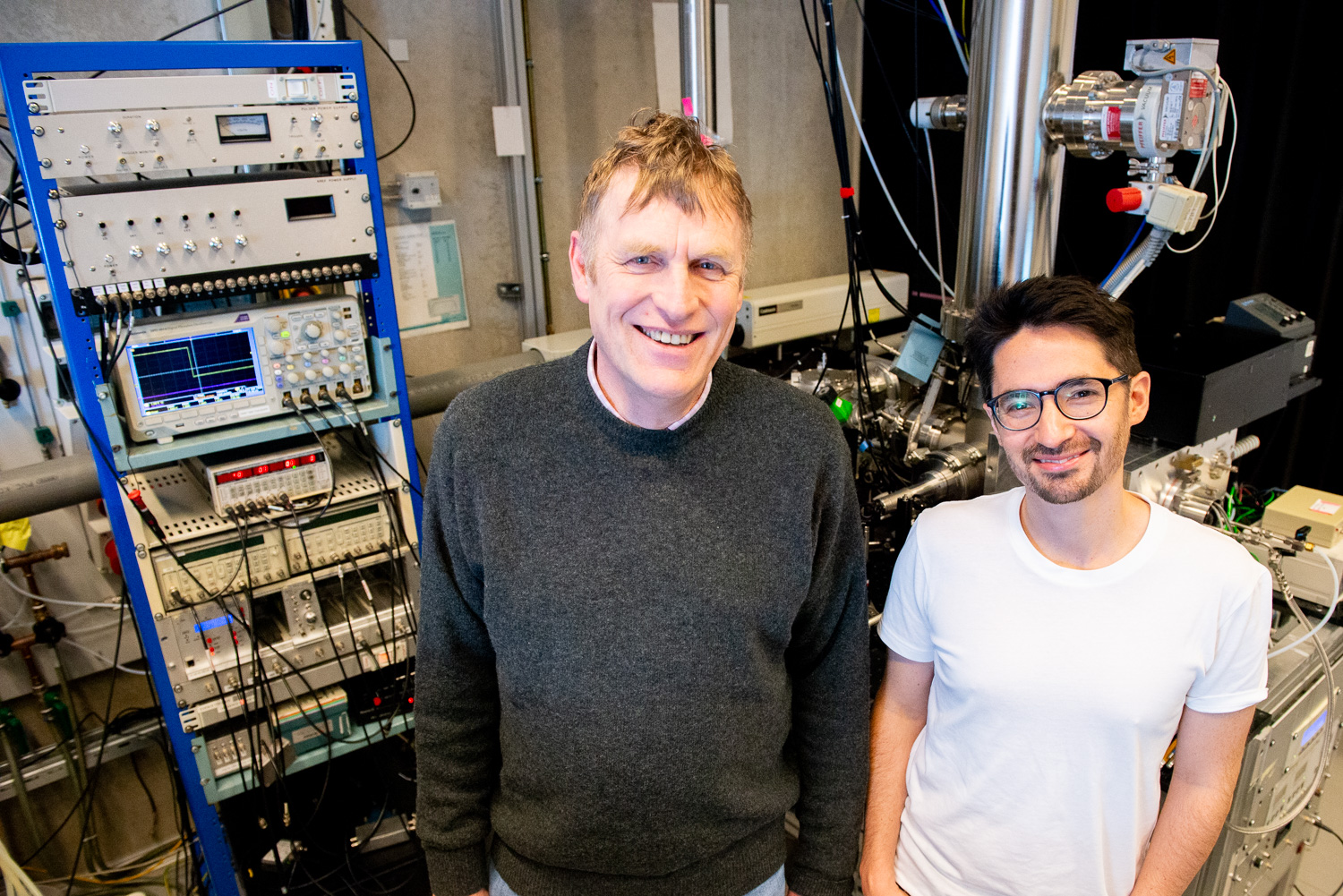Shedding light on a promising organic catalyst

UvA researcher Wybren Jan Buma and HFML-FELIX researcher Piero Ferrari Ramirez in the lab
Researchers from HFML-FELIX and the University of Amsterdam have determined the geometry and subtle interactions of a promising organic catalyst, paving the way for a more efficient design.
Catalysts – substances that enable chemical reactions – have shaped our society, with applications in fields as diverse as food production, pharmaceutical synthesis and sustainable energy. Commonly, catalysts are metal-based, making them expensive, environmentally unfriendly and often toxic. In recent years, however, catalysts composed of solely organic elements, or organocatalysts, have gained major attention, given their potential to be cheap, stable, harmless and environmentally friendly.
The more (hydrogen bonds) the merrier
To date, many organocatalysts have been shown to be effective catalysts, with the Noble prize in Chemistry 2021 being awarded for the discovery of such catalysts. Nevertheless, we still lack a fundamental understanding on the mechanisms by which organocatalysts operate at an atomic level. An important class of organocatalysts are those operating via hydrogen-bonding, which are inspired by the functionality of enzymes in biological systems. Such organocatalysts rely on multiple hydrogen bonds to coordinate precursors, as well as to stabilize transition states found along the reaction pathways, thus lowering energy barriers.
A famous example of a thiourea-based organocatalyst is Takemoto’s catalyst. This catalyst is a so-called ‘bifunctional’ catalyst, with its activity relying on the formation of hydrogen bonds with both reactants simultaneously. This offers a wider control over coordination than cases with a single hydrogen bond, but also makes their interactions more complex and difficult to investigate.
Mapping the structure and chemical interactions
Detailed insight into the structure of this catalyst, together with the coordination of the reactants and their subtle chemical interactions, are thus key to understand the mechanisms by which organocatalysts perform their function. Here, using the Takemoto organocatalyst as a prototypical catalyst-reactant system, researchers from HFML-FELIX and the University of Amsterdam show that combining mid-infrared spectroscopy with molecular beam experiments and quantum chemical calculations is a powerful approach to obtain a fundamental understanding of the functionalities of organocatalysts, crucial for the future development of more efficient systems.
In their work, now published in The Journal of Chemical Physics Letters, they determined the precise geometry adopted by the catalyst-reactant complex, thereby providing direct information on the hydrogen bonds involved during the catalytic reactions, which ultimately determine the catalytic activity of the system. Moreover, they solve a long-standing discussion on the preferred conformation of the bare catalyst, by providing an unambiguous determination of its structure. The general applicability of this approach holds great promise for extending it to elucidate other relevant complex reactions involving (organo)catalysts.
Future designs
HFML-FELIX researcher Piero Ferrari: ‘Accessing not just the conformation of the catalyst-reactant complex, but also determining the specific interactions that bind the species together, gives us very important information about the reaction pathways of organocatalysts along their catalytic activity. This is fundamental for designing better catalysts in the future.’
You can find the paper here: